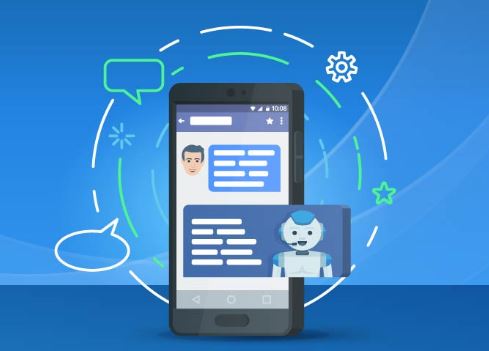In an era where technology is at the forefront of almost every industry, the insurance sector is no exception. Bots, powered by Artificial Intelligence (AI), are becoming an integral part of the insurance industry. These chatbots are not just automated text-based interfaces but are capable of simulating human-like conversations and providing instant responses. In this article, we will delve into how chatbots are revolutionizing the insurance industry and why they are more than just a trend.
Part 1: Understanding Chatbots in Insurance
A. What is a Chatbot?
A bot is an AI-powered software that can simulate a conversation with users through messaging platforms, websites, or mobile apps. In the insurance industry, chatbots are used for various purposes such as:
- Providing instant customer support
- Guiding users through the insurance buying process
- Handling claims processing
- Offering personalized insurance advice
B. The Role of AI in Insurance Chatbots
AI plays a crucial role in the functionality of bots. Through Natural Language Processing (NLP), chatbots can understand and interpret human language, allowing them to:
- Respond to customer queries accurately
- Learn from interactions to improve future responses
- Handle multiple queries at once
C. Different Types of Insurance Chatbots
There are several types of chatbots in the insurance sector:
- Customer Service Bots: Handle general inquiries and provide information on policies.
- Claims Processing Bots: Assist customers in filing insurance claims.
- Sales Bots: Help in selling insurance policies by providing tailored recommendations.
Part 2: Benefits and Use Cases of Chatbots in Insurance
A. Improving Customer Experience
Bots are available 24/7, ensuring that customer queries are addressed promptly. They offer:
- Quick responses
- Personalized interactions
- Convenient service
B. Streamlining Claims Processing
Bots simplify the claims process by:
- Guiding customers through the claims process
- Collecting necessary information
- Providing updates on claim status
C. Fraud Detection through Chatbots
Bots can help in detecting fraudulent claims by:
- Verifying information
- Identifying inconsistencies
- Alerting human agents for further investigation
D. Cross-Selling and Upselling Insurance Products
Bots analyze customer data to make personalized product recommendations. They:
- Identify customer needs
- Suggest relevant insurance products
- Provide detailed information on recommended products
E. Integrating Chatbots with Existing Insurance Systems
Integrating chatbots can enhance efficiency. They can:
- Be integrated into websites, apps, and messaging platforms
- Sync with customer databases for personalized service
- Automate routine tasks, freeing up human agents
Part 3: Future Trends and Challenges
A. Future Trends of Chatbots in Insurance
Bots are evolving. Future trends include:
- Voice-activated chatbots
- Chatbots with advanced AI capabilities
- Integration with IoT devices
B. Challenges and Limitations of Using Chatbots in Insurance
Despite the benefits, there are challenges such as:
- Data security and privacy concerns
- Limitations in understanding complex queries
- Integration challenges with existing systems
Part 4: Case Studies and Real-Life Examples
Several insurance companies have successfully implemented chatbots. For example:
- Perfect Pet Insurance: A virtual assistant that answers customer queries.
- Infocus Insurance: A Facebook Messenger insurance chatbot that helps customers purchase insurance.
Part 5: Getting Started with Chatbots in Your Insurance Business
A. Tips for Implementing Chatbots
- Choose the right platform
- Focus on customer needs
- Continuously monitor and improve the chatbot
###B. Measuring the ROI of Chatbots in Insurance
To measure the ROI of bots in insurance, consider:
- Customer satisfaction levels
- Reduction in operational costs
- Increase in sales through cross-selling and upselling
Frequently Asked Questions
- How can chatbots help in educating and onboarding new insurance customers?
- Bots can provide instant responses to queries, guide customers through the onboarding process, and offer educational content about insurance products.
- What measures are taken to ensure data security and privacy in chatbots?
- Bots should comply with data protection regulations, encrypt data transmissions, and have user authentication mechanisms.
- What are some successful examples of chatbot implementation in the insurance sector?
- Companies like Infocus and Perfect Pets have successfully implemented chatbots to improve customer service and streamline operations.
- How can insurance companies measure the return on investment (ROI) of bots?
- By analyzing customer satisfaction, operational costs, and sales metrics, insurance companies can measure the ROI of chatbots.
- Are there any regulatory considerations for using bots in insurance?
- Yes, bots must comply with data protection laws and insurance regulations to ensure customer data is handled securely and ethically.
Conclusion
Bots are revolutionizing the insurance industry by improving customer experience, streamlining claims processing, and detecting fraud. As AI technology continues to evolve, the capabilities of chatbots will only increase. Insurance companies should consider integrating chatbots into their operations to stay competitive and meet customer expectations.
Call to Action
Ready to see how chatbots can transform your insurance business? Book a demo with our experts to explore the possibilities and get personalized recommendations.
For more insights on bots in the insurance industry, visit our detailed guide here.


